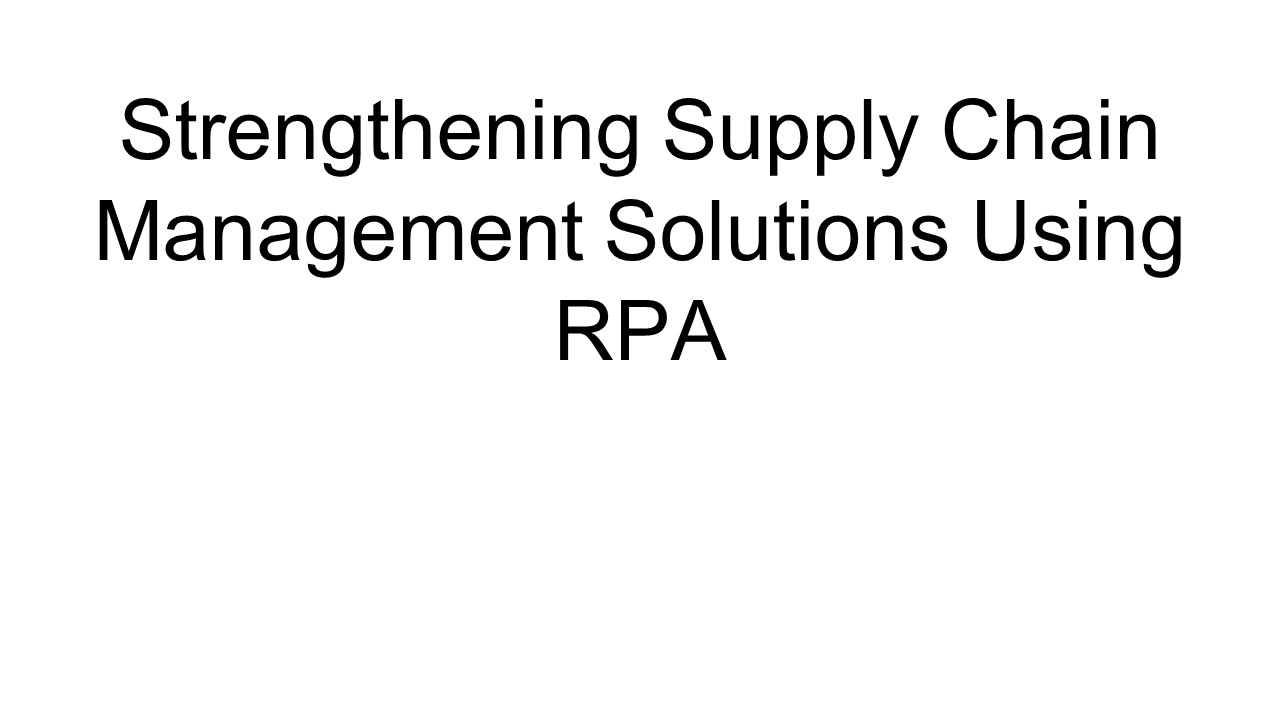Strengthening Supply Chain Management Solutions Using RPA - PowerPoint PPT Presentation
Title:
Strengthening Supply Chain Management Solutions Using RPA
Description:
The use of RPA in supply chain management solutions enables enterprises to significantly improve their order quantities and order fulfillment accuracy. – PowerPoint PPT presentation
Number of Views:0
Title: Strengthening Supply Chain Management Solutions Using RPA
1
Strengthening Supply Chain Management Solutions
Using RPA
2
- Enterprises invest millions of dollars in
building their supply chain infrastructure. While
most businesses use different types of supply
chain management solutions, complete process
automation and data integration remains a
challenge. - Besides, digital transformation is playing a
crucial role in SCM and changing the way
enterprises conduct operations, fulfill orders,
and deliver products. The rapidly evolving RPA
technology can boost an enterprises overall
supply chain efficiency with significant cost
reduction. It automates processes that are
carried out manually, thereby reducing errors and
anomalies. - https//erpsolutions.oodles.io/blog/robotic-proces
s-automation-supply-chain/
3
- How RPA Fastens Decision-Making In The Supply
Chain? - Robotic Process Automation (RPA) techniques use
specialized computer programs to standardize and
automate repeatable mundane tasks and business
processes with rule-based software. It
incorporates the existing user-interface and runs
on several platforms including web-based
applications, ERP systems, and mainframes. RPA
enables organizations to make faster decisions by
automating tasks that are usually delayed due to
excessive process time. - While automating workflows using traditional
methods, the programmers produce a sequence of
actions to perform various tasks. Afterward, they
integrate them with back-end systems such as ERP
or CRM, using application programming interfaces
(API) and scripting languages. However, RPA
implementation generates action lists by
recording user-performed tasks in the application
UI. Those recorded tasks are then performed
directly and repeatedly on the UI, in an
automated manner.

